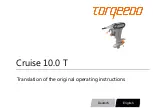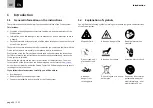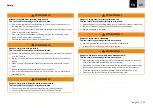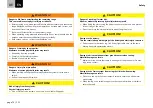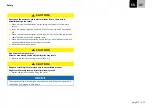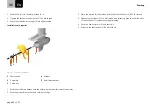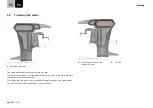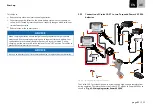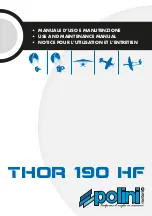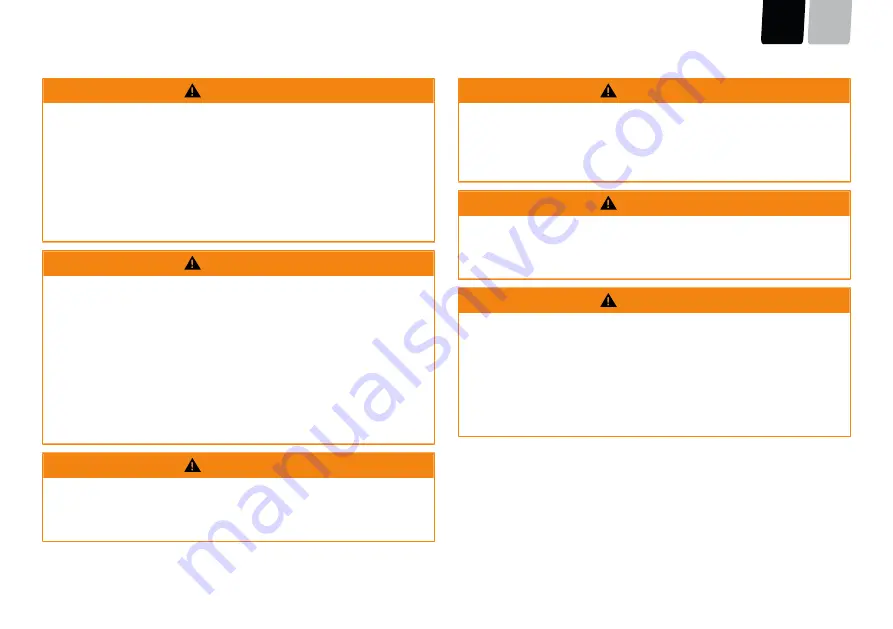
Safety
WARNING!
Mechanical hazard from rotating components!
This can result in severe physical injuries or death.
■
Do not wear jewellery or loose clothing in the vicinity of the drive shaft or
the propeller. Tie up long, loose hair.
■
Switch off the Cruise system when there are people in the immediate vicinity
of the drive shaft or the propeller.
■
Do not carry out maintenance or cleaning work on the drive shaft or pro-
peller if the Cruise system is engaged.
■
Operate the propeller only when it is under water.
WARNING!
Danger of injury from short circuit.
This can result in severe physical injuries or death.
■
Remove metal jewellery and wristwatches before you start work on batteries
or in their vicinity.
■
Always put down tools and metal objects without making contact with the
battery.
■
When connecting the battery, ensure correct polarity and secure connec-
tions.
■
Battery terminals must be clean and free of corrosion.
■
Do not store batteries hazardously in a box or drawer, e.g. an insufficiently
ventilated locker.
WARNING!
Danger of injury from batteries which are unmatched.
This can result in severe physical injuries or death.
■
Connect only identical batteries (manufacturer, capacity and age).
■
Connect batteries only if they have an identical state of charge.
WARNING!
Danger of injury from incorrect calibration trip.
This can result in severe physical injury or in death.
■
Attach the boat to the landing stage in such a way that it cannot break free.
■
There must always be one person in the boat during calibration.
■
Beware of people in the water.
WARNING!
Danger of injury from overheating.
This can result in severe physical injuries or death.
■
Use only genuine cable sets from Torqeedo, or cables with
at least 70 mm² total copper cable cross-section.
WARNING!
Danger to life from a boat which is not manoeuvrable!
This can result in severe physical injuries or death.
■
Before starting a trip, inform yourself of the intended travel area, and take
note of the predicted weather and water conditions.
■
Depending on the size of the boat, keep the typical safety equipment ready
(anchor, paddles, means of communication, auxiliary drive if necessary).
■
Check the system for mechanical damage before setting out on a trip.
■
Do not use the system unless it is in proper working order.
page 75 / 121


